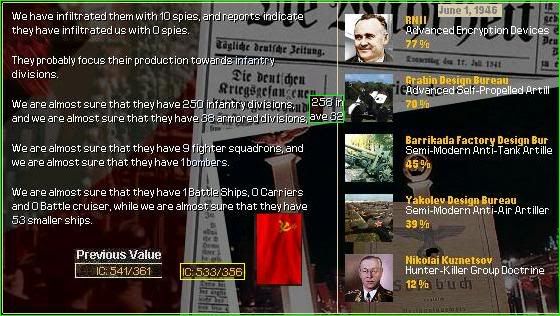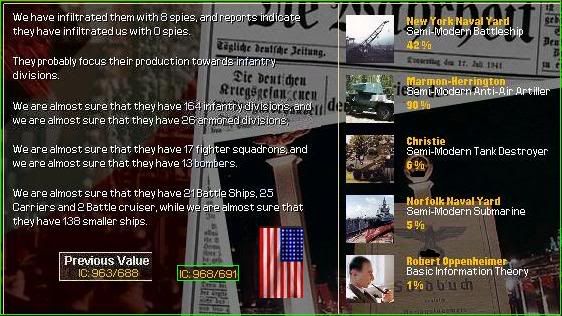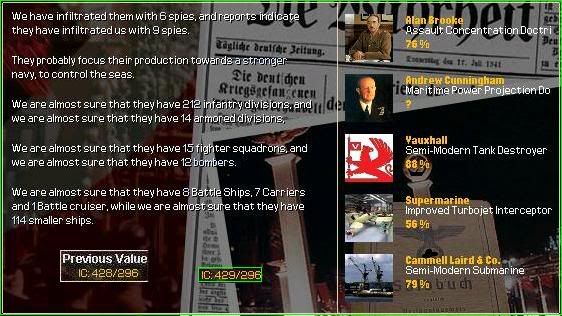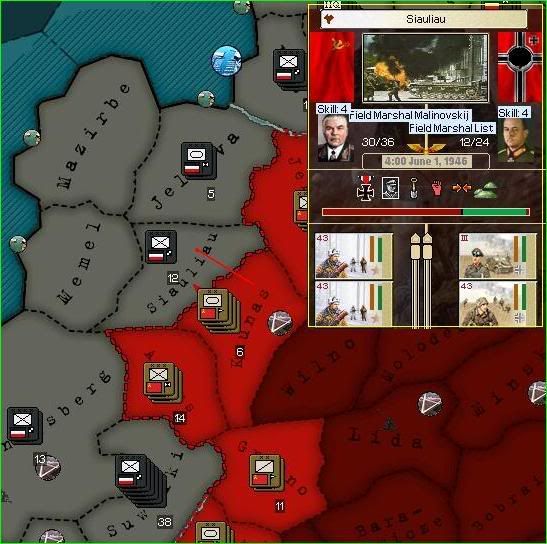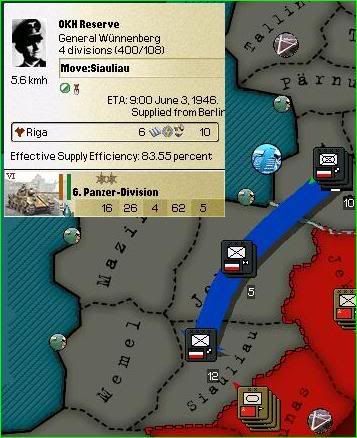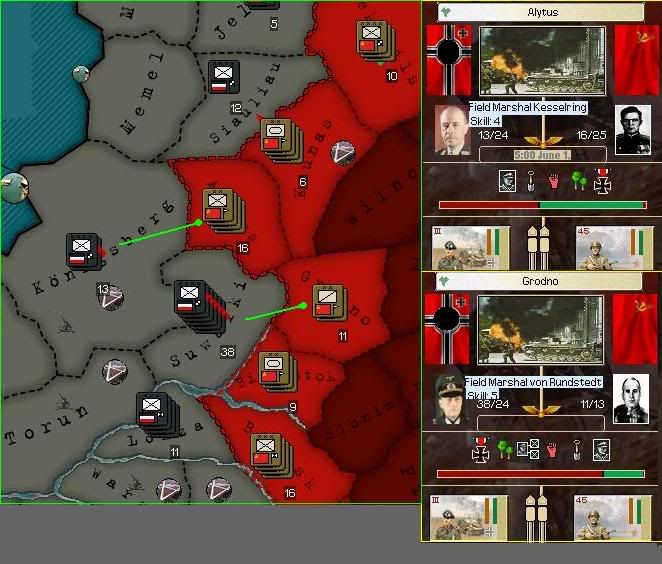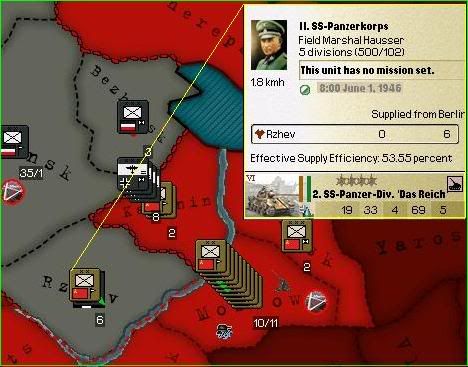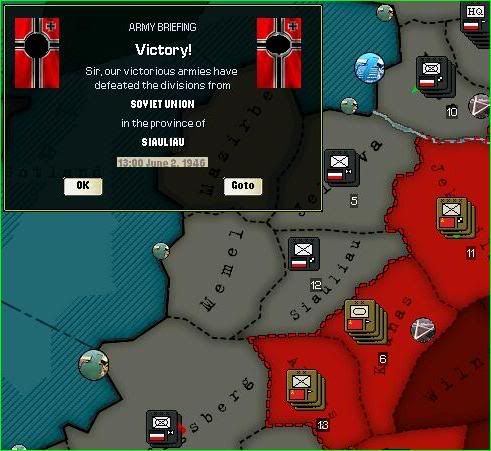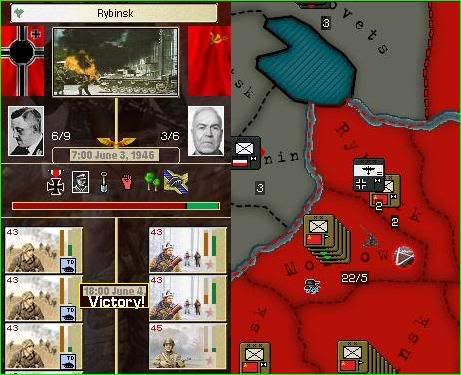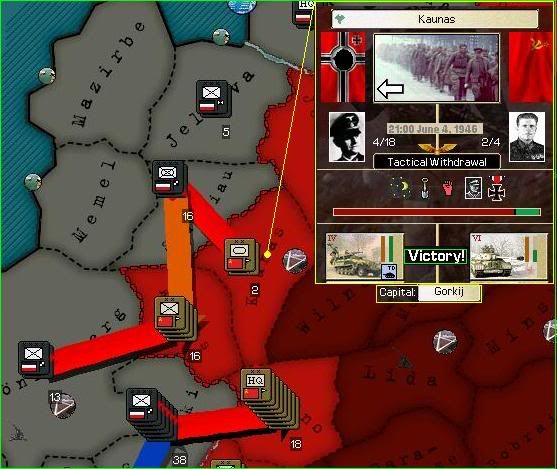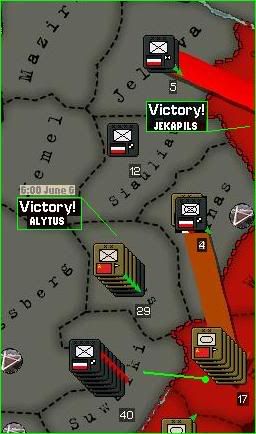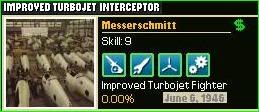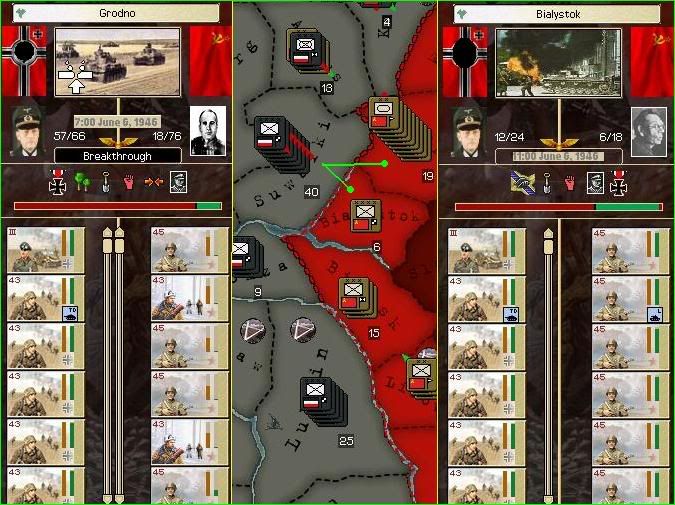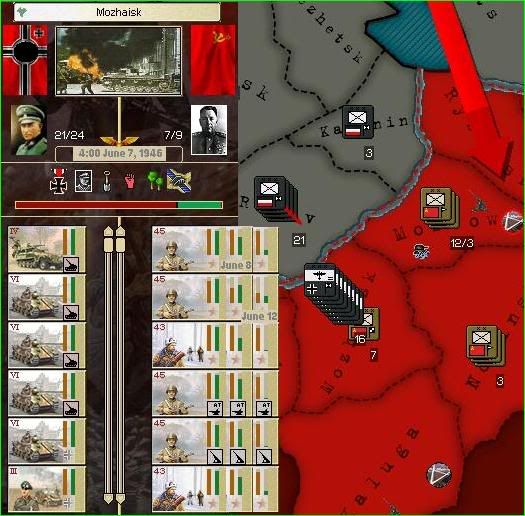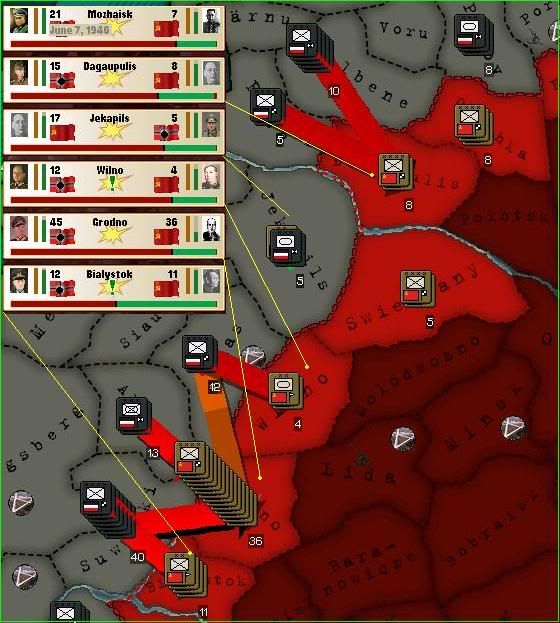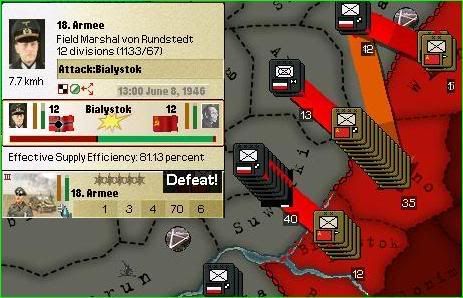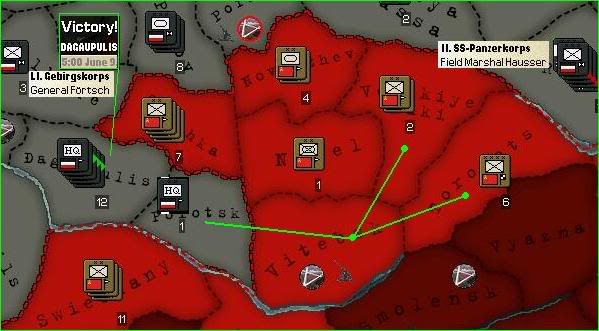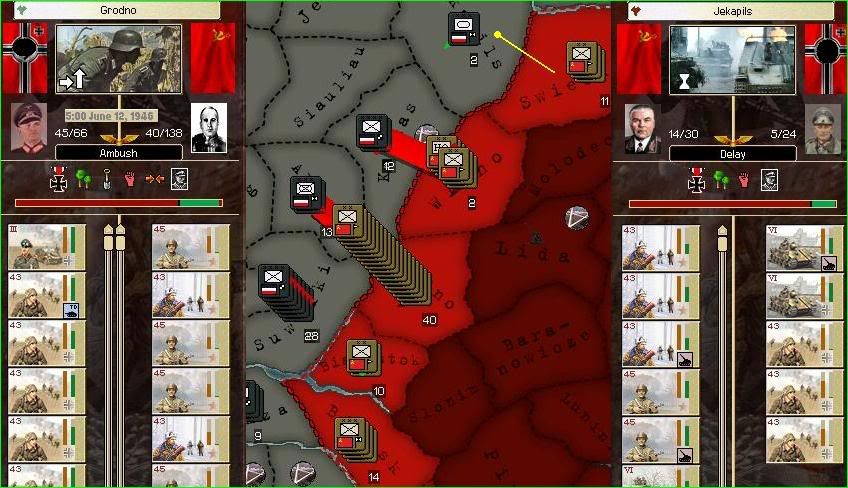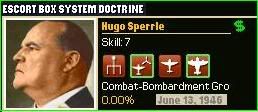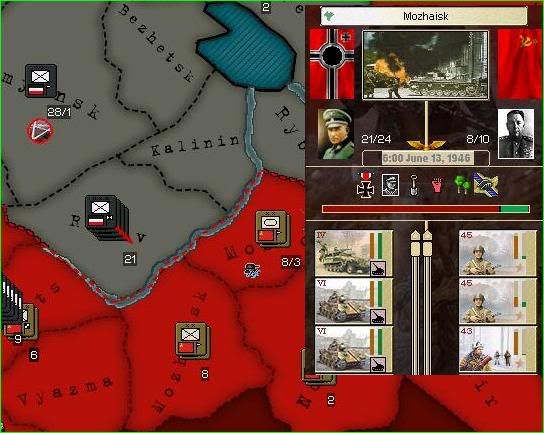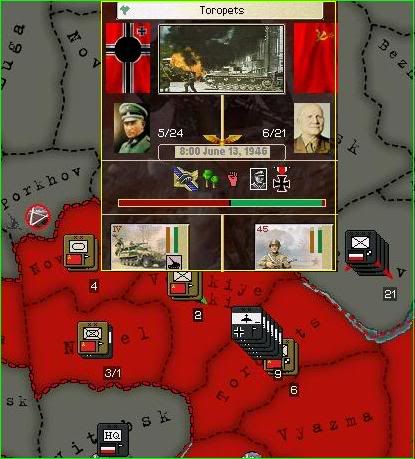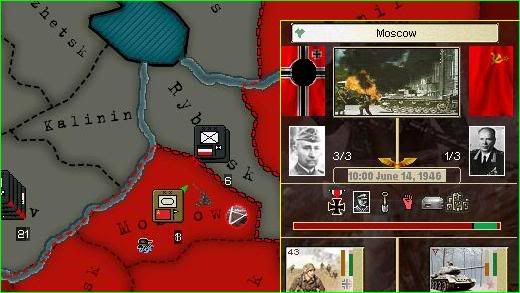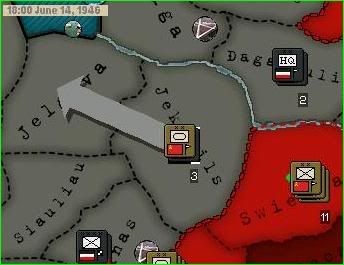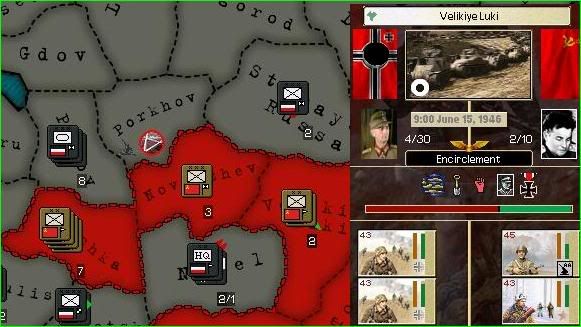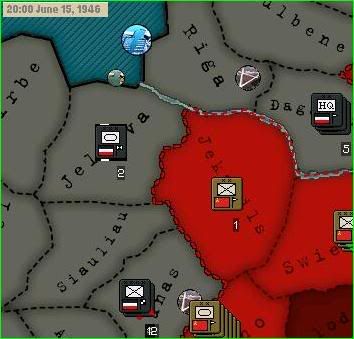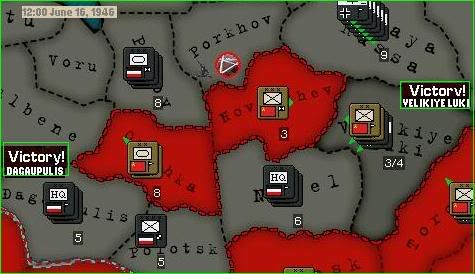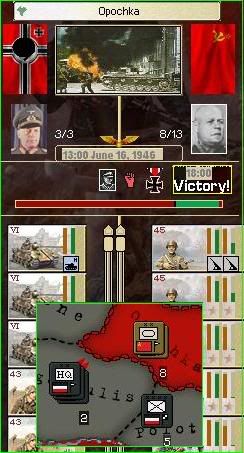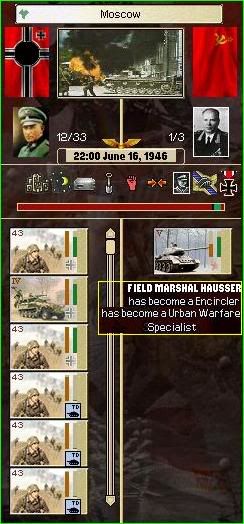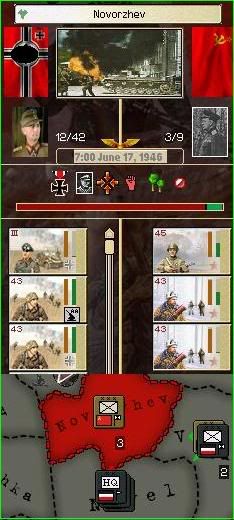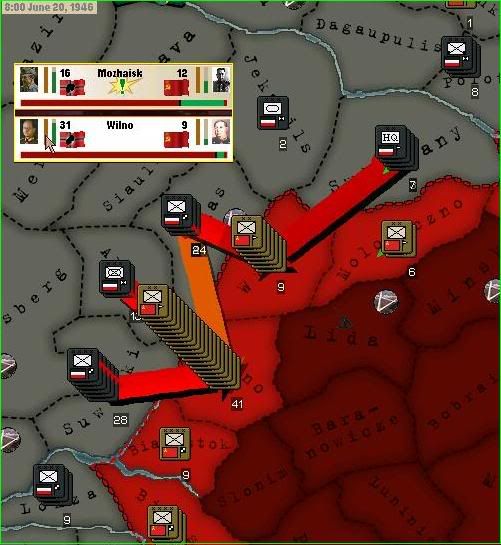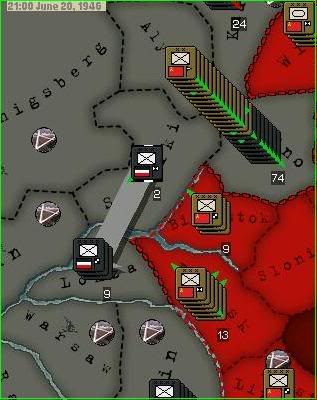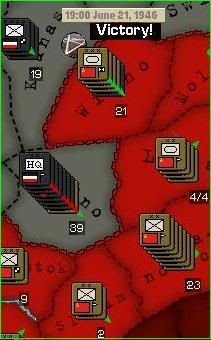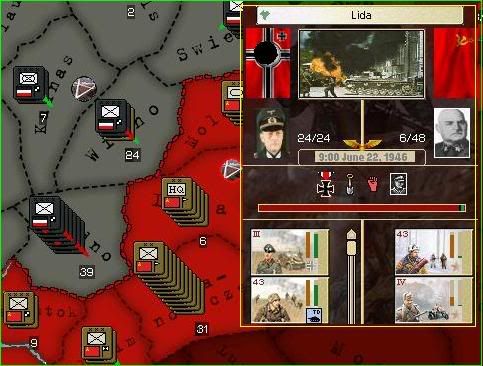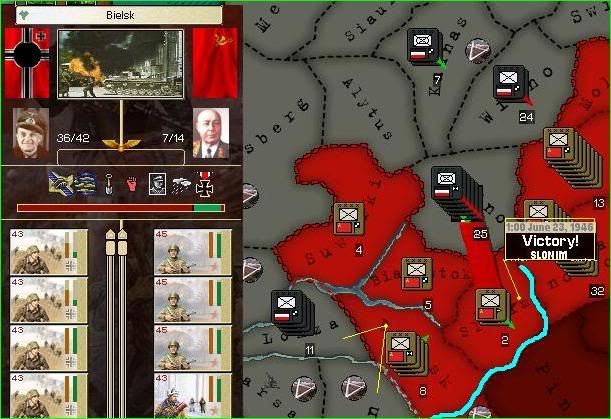Red Storm
1800 June 14th 1946
Jekapils, Soviet Union
In mid-June, the Wehrmacht hadn't achieved any serious damage to the Soviet Army yet. The Red Army, while in full retreat, still maintained almost the same strenght it had before the offensive began, and in some points it could even retaliate.
Jekapils was too lightly defended to resist a Soviet attack. No resistance was offered, as it was unrelevant to do so.
0900 June 16th 1946
Velikiye Luki, Soviet Union
Somewhere else, things looked grim for the Soviet forces; the bulge previously created was now coming to a close, and around ten Soviet divisions would fall in a hefty pocket.
Chances that they would escape were too slim to succeed.
A minor worry had risen in Jekapils as the Soviets occupied the region. It was a minor concern though, as the Soviet forces were too light to attempt a breakthrough to the Baltic Sea, even if Riga was left undefended.
1200 June 16th 1946
Heeresgruppe Nord, Soviet Union
On June 16th, the Wehrmacht finally scored another strategic victory as Velikiye Luki fell, leaving more than ten Soviet divisions cut from the mainland.
This would be the first major score of the 1946 campaign. Ten divisions could've been a minor dent to the Soviet war machine back in 1941, but now they would feel the difference as they already had few divisions to plug the gaps in their lines. German forces immediately started to shrink the pocket.
It took five hours to push eight divisions out of Opochka.
2200 June 16th 1946
Moscow, Soviet Union
Even if there was only one division defending the former capital city of the Soviet Union, it heroically stood against twelve of its counterpart, assaulted from three directions, besieged from day to night.
By now, Hausser became used to Urban tactics and developed a keen interest in local encirclement tactics. How long that division would hold, however, and if the Soviets would bring reinforcements, his battered divisions couldn't know.
0700 June 17th 1946
Novorzhev, Soviet Union
Victory was immediate as the pocket was swiftly closed. Three more divisions fell under the grasp of the Wehrmacht, with some others still retreating from other places.
The Soviet Union would have plenty of new names to recycle for their new divisions, but not as plenty of manpower perhaps.
0800 June 20th 1946
Heeresgruppe Mitte, Soviet Union
Other sectors were far from quiet, as Heeresgruppen Nord and Mitte pressed towards the battered Soviet divisions.
The attack on Wilno would meet an end very soon with a German victory, while Mozhalsk would hold a bit more.
What seemed like a generic frontal assault all over the front was actually part of another encirclement operation. The Soviets only helped the process by attacking Suwalki and forming themselves a bulge the Wehrmacht wanted to create, as Grodno fell to their forces and little else was behind it to hold the German advance.
With Grodno, forty Soviet divisions left a staggering amount of casualties, and they now faced the unsurmountable task of defending against the same enemies, stronger as ever. Baranowicze could not be held for any longer than a few days, and the Soviet divisions would be further mauled.
1900 June 21st, 1946
Wilno, Soviet Union
Wilno fell with little resistance offered by the Soviet Army, and more German divisions were free to perform another task.
Von Rundstedt would spearhead another attack further East.
Lida would be his next target. While the Soviet defenses were ridiculously weak, he was sure that it would attract Soviet reinforcement from nearby provinces, creating the premises for another encirclement.
That was not the only encirclement being planned, as Model started to test the Soviet defenses in Bielsk. With Slonim falling on the 23rd, the survival of almost ten Soviet divisions would only depend on how long their defenses in Bielsk would hold.
